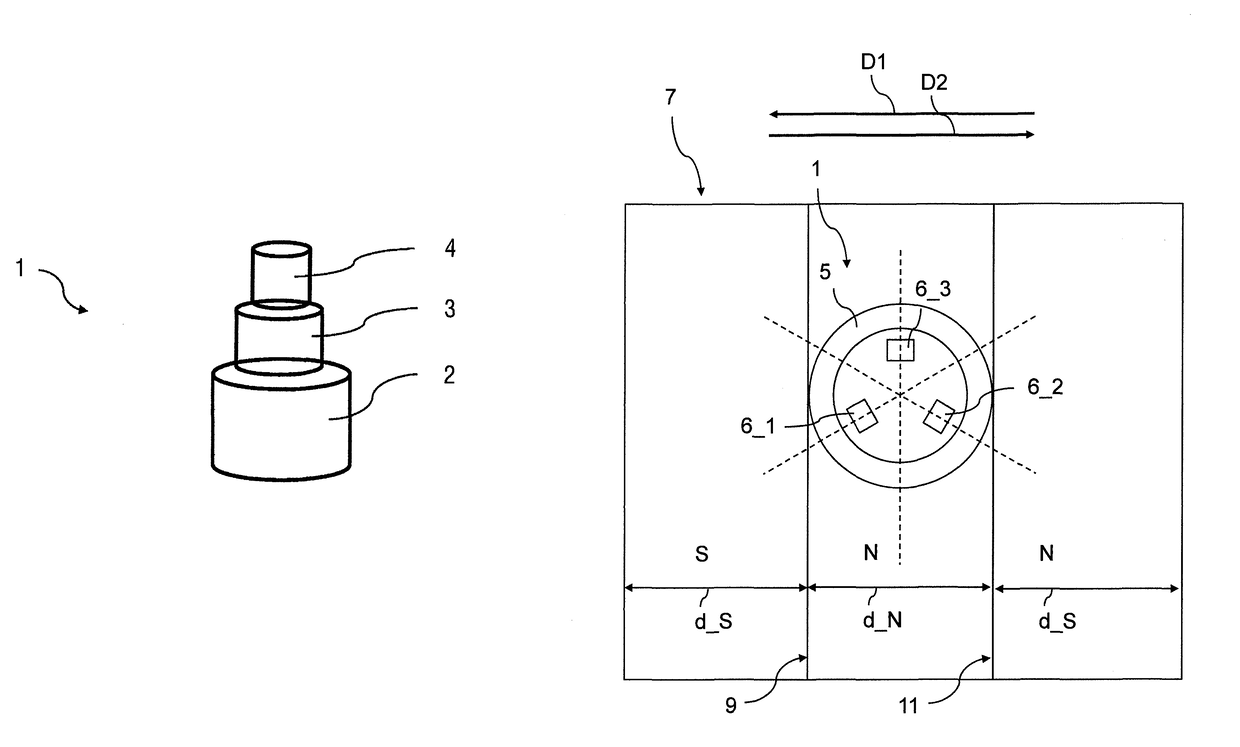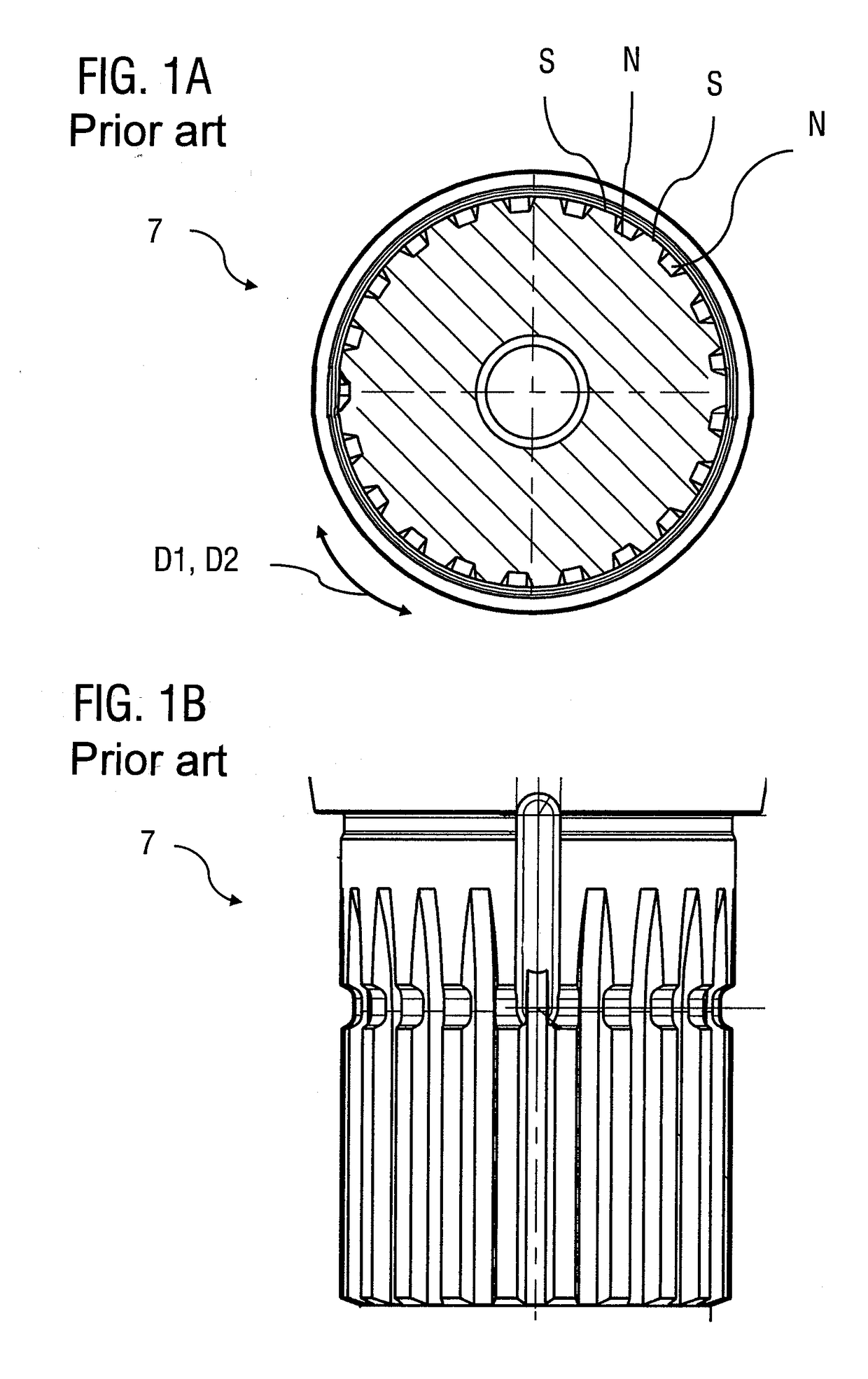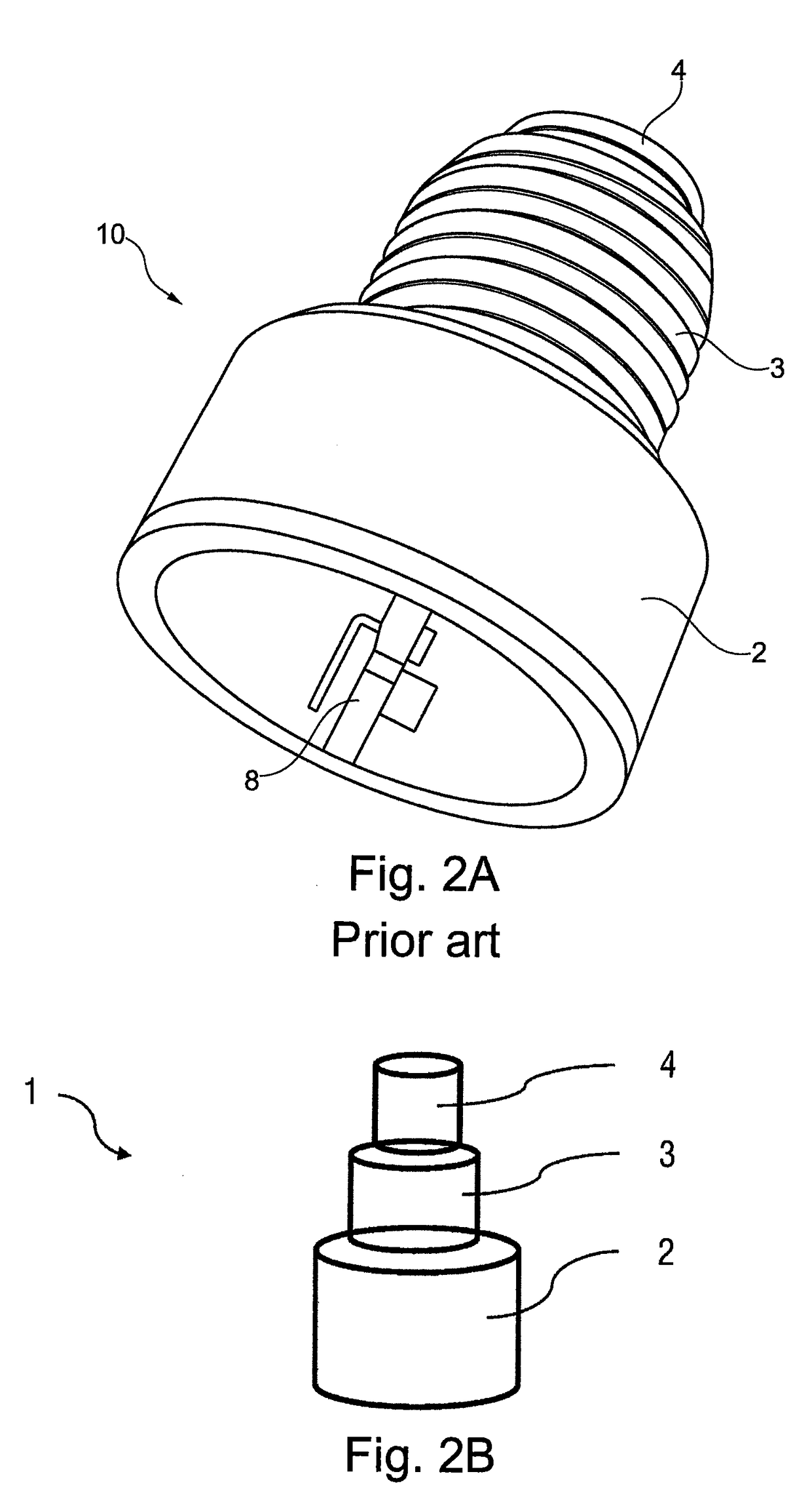Arrangement for determining a revolution rate and direction of rotation of a rotating component
a technology of rotating components and rotation rates, applied in the direction of electric/magnetic devices, instruments, transportation and packaging, etc., can solve the problems of inability to determine the inability to use revolution rate sensors with screw mountings, and the inability to accurately measure the direction of rotation, so as to avoid the disadvantages of conventional techniques
- Summary
- Abstract
- Description
- Claims
- Application Information
AI Technical Summary
Benefits of technology
Problems solved by technology
Method used
Image
Examples
Embodiment Construction
[0031]FIGS. 1A and 1B show a known shaft 7 made of a ferromagnetic material as an example of a component that rotates during its operation, the angular rate of rotation, acceleration and direction of rotation of which are intended to be measured by a sensor device. The shaft comprises a regular circumferential structure of grooves N and webs S. All the webs S have the same width as one another, and all the grooves N have the same width as one another, but the width of the grooves can be different from the width of the webs. The two possible directions of rotation D1 and D2 of the shaft 7 are indicated with the double arrow designated by D1 and D2.
[0032]FIG. 2A shows schematically in a perspective view the design of a revolution rate sensor 10 that is known from the prior art. The known revolution rate sensor is implemented as a screw-in revolution rate sensor and comprises for this purpose a neck segment 3 with an external thread. The sensor is screwed into a corresponding threaded ...
PUM
 Login to View More
Login to View More Abstract
Description
Claims
Application Information
 Login to View More
Login to View More - R&D
- Intellectual Property
- Life Sciences
- Materials
- Tech Scout
- Unparalleled Data Quality
- Higher Quality Content
- 60% Fewer Hallucinations
Browse by: Latest US Patents, China's latest patents, Technical Efficacy Thesaurus, Application Domain, Technology Topic, Popular Technical Reports.
© 2025 PatSnap. All rights reserved.Legal|Privacy policy|Modern Slavery Act Transparency Statement|Sitemap|About US| Contact US: help@patsnap.com



